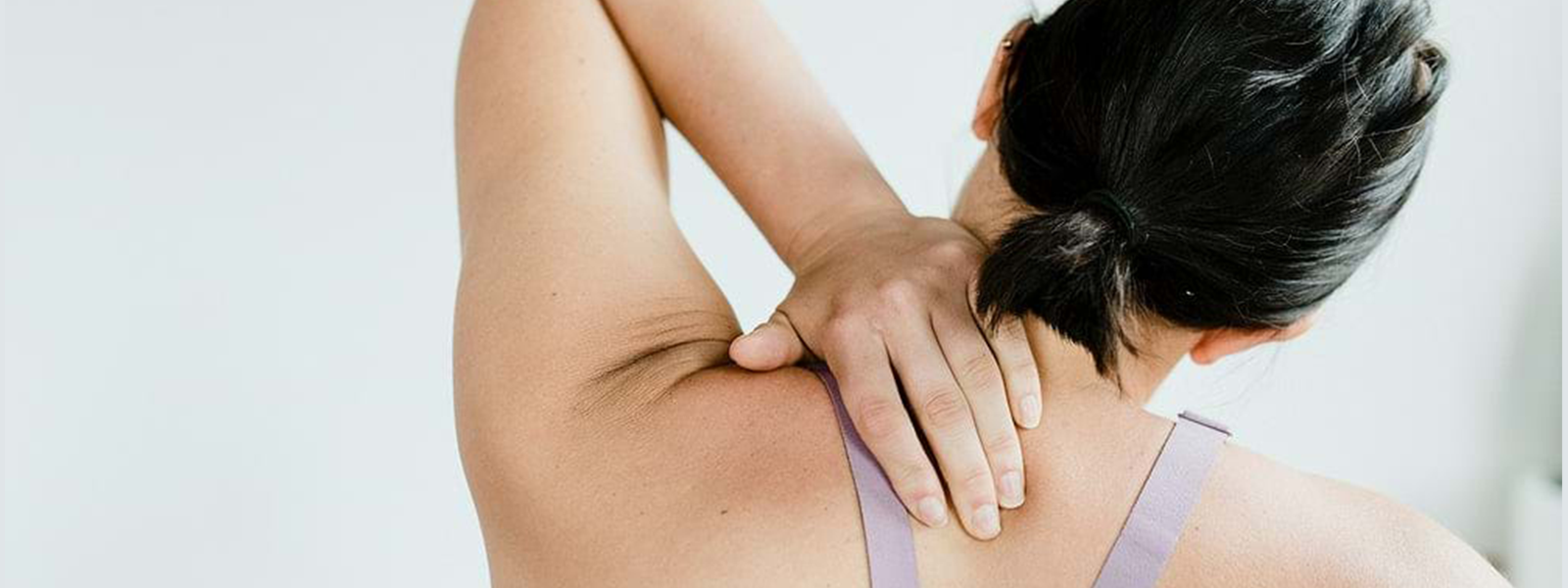Hamstring Healing: Acupuncture & Rehab
Hamstring strains are among the most common sporting injuries. So how could acupuncture and Chinese medicine help your recovery process?
At Village Remedies clinics in Sydney CBD and Balmain, we work with a wide range of people recovering from various injuries such as hamstring strains. This page is a resource of recovery advice and exercises for those concurrently undergoing treatment with us or another healthcare professional. It is important you take your hamstring strain recovery seriously as one third of athletes will re-injure their hamstring within 12 months of returning to full sport activity, so make sure you're working with a professional who can tailor the advice to your specific circumstances.
Our goal with acupuncture and Chinese medicine is to help support your recovery process and hopefully speed things up for you. At Village Remedies we use a very safe style of acupuncture where points distant to the injured area are used to trigger the body's innate healing response. This means that during the initial phases of healing and inflammation, we can still safely treat the injured hamstring without causing further trauma to the area by working on it directly. As treatments and your recovery progress, we layer on other techniques to address imbalances and further promote scar tissue remodelling.
Your practitioner will also be looking to treat you as whole person, rather than just an injured ankle. This means we look at how we can help support your body's overall ability to heal by looking to reduce the stress response (which is often elevated in pain and injury), improve sleep quality and promote health digestion. To help support this and your hamstring strain recovery, your practitioner may also recommend Chinese herbs. The benefit here is that you'll be getting a little treatment daily from the inside, and we find that it can help boost the effects of acupuncture.
Watch the videos below for an idea of what the treatment and recovery process is like if you were to come and work with us at Village Remedies, as well as some acupressure points for pain and dietary advice for better recovery:
Below we will summarise the different phases of recovery you can expect to go through and the associated exercises to work on. Depending on the severity of your hamstring strain, full recovery can be anywhere from 1 week to 3 months or more, which is why it's important to work under the guidance of your acupuncturist or other trained health professional, progressing through phases gradually as you can perform the exercises consistently without pain.
PHASE 1: DAMAGE CONTROL
The goals initially after injury are:
- To protect scar tissue development - rest and de-load so as not to re-injure the tissue being repaired.
- Minimise atrophy - don't rest so much so as to cause dramatic loss of strength
In the clinic we'd be using distal acupuncture (points distant to the injury) to stimulate your body's natural healing processes. Our goals will be to help reduce pain and swelling. Certain Chinese herbs can also be useful in reducing inflammation and promoting circulation.
Outside of the clinic you'll be using the "PRICE" guidelines for the first 48-72 hours:
Protect - be careful not to re-injure it.
Rest - take the load off the muscle and give it a chance to start to heal.
Ice - 10-20 minutes on, 20 minutes off for pain relief and reduction of swelling. While this is a very common recommendation for many types of injuries and pain, it is only recommended within the first 48 hours after initial injury as overuse of ice beyond this point has been shown to delay recovery rates.
Compression - helps reduce swelling.
Elevation - also helps reduce swelling.
During your recovery process, you may experience exacerbations of pain and/or swelling and so it is okay to use the above protocol, just being mindful not to overuse ice as it may impact your recovery time.
In addition to this, daily gentle movement is also important for the recovery process. We're deliberately avoiding specific strengthening and stretching as these will re-injure the tissue trying to repair. Some example exercises include (check out the video below for more information and demonstrations):
- Gentle walking
- Low resistance stationary bike riding (up to 10 minutes)
- Leg swings 1 minute each leg, 3 times
- Single leg balance (progressing from eyes open to eyes closed) 20-30 seconds, 4 times
- Side steps 10 reps each leg, 3 times
IMPORTANT: Throughout all phases of recovery, use pain as your guide for your activity and intensity levels. This means that if you feel pain during or after any particular exercise or activity, you need to stop or do less. This is not a time to try to tough it out, pain is indicating that you're re-injuring the tissue and delaying your recovery.
When you can walk, go up and down stairs and jog lightly over a short distance without pain, you are ready to move onto phase 2.
PHASE 2: STABILISING & REBUILDING
Phase 2 goals are:
- To restore pain-free hamstring strength
- Encourage better neuromuscular control of the core and pelvis
In the clinic we'd be using distal acupuncture again, combined with gentle movement of the injured leg with the goal of helping to rebuild neuromuscular connections. Chinese herbs can also be useful to help support overall health and recovery.
Outside of the clinic it's time to start incorporating some strengthening exercises for the core, hips and hamstrings. When you injure a muscle, it does not happen in isolation. Other surrounding muscles can be affected by the inflammation, causing weaknesses and imbalances. There may have also been underlying imbalances and muscle dysfunction that contributed to the hamstring injury in the first place. This is why it's important you do exercises that integrate the body rather than only focusing on isolated exercises.
Here are some sample exercises you'd be looking at adding in 5-7 days per week, with your exercises from the previous phase acting as a warm up (watch the video below for more information and demonstration):
- Bridge progression (from heel digs to bridge to bridge walk) 10 reps, 3 times
- Rotating plank with 5 second hold each side for 10 reps, 2 times
- Single leg balance windmill 10 reps per leg, 3 times
- Lunge with trunk rotation 10 reps per leg, 2 times
With these exercises, really focus on good form and quality over quantity. Remember to use pain as your guide and to do less or simpler versions of these exercises if needed.
To move onto the next phase you'll be looking to be able to jog forwards and backwards, at a moderate intensity, without pain.
PHASE 3: REBUILDING STRENGTH & SPEED
Phase 3 goals are:
- To be asymptomatic in all activities (i.e. no pain or tension)
- Reintroduce sport specific drills and work back up to previous intensity
In the clinic we use acupuncture to address any muscle imbalances of the hip and hamstrings or inhibition which is where certain muscles are impaired due to the injury or its compensations. For this we may use "local acupuncture" where we use points directly in the affected muscles. Chinese herbs may still be useful if there are any underlying issues with sleep, digestion or stress.
Outside of the clinic, it's time to start ramping up intensity of exercises and incorporating agility exercises to get you back to running safely. You're feeling better and getting close to being able to fully return to sport so it is very important the you keep using pain as your guide and you don't try to rush it. Remember that one third of hamstring strains with re-injure with 12 months of returning to sport so make sure you do your best with your rehab.
For exercises in this phase, you want to limit your rehab workouts to 4-5 days per week to ensure you have adequate recovery time, though you'll want to keep doing some gentle movement like walking every day. You'll continue to use the exercises from the previous phase but can increase the difficulty of the exercises by adding light weights to the rotating plank, single leg windmill and lunge with trunk rotation.
Add in exercises such as the following to start working back up to normal running and changes of direction:
- Skipping (like when you were a kid, not with a rope though this is also an acceptable addition) helps take you through a running range of motion but with less load and intensity
- Forwards and backwards acceleration helps training for changes in direction
- Sport specific exercises will depend on what you do, so have a chat with your coach or physio
You're ready to return to sport when you have full strength and range of motion (as assessed by your healthcare professional) and you can perform the sport specific drills without pain.
Make sure you continue to work on and look after your hamstring after returning to sport. See the next section for more info on prevention and longevity.
HAMSTRING STRAIN PREVENTION
It is particularly important to look after your hamstrings if you've already strained them once before as you're at a higher risk of this type of injury again. This is because the scar tissue laid down over the tear in your muscle can take up to 12 months or more to fully remodel and will never be exactly the same as before.
Regular check up sessions for acupuncture or with your healthcare professional can be useful to make sure things are keeping in good condition, giving you a chance to catch any imbalances or issues early. The main focus will be on hip balance and mobility, and core stability.
Often hamstrings can be over working due excessive tension in the hip flexor muscles (in the front of the hip) which weaken the glutes, causing hamstrings to do more hip extension than they're designed for. If you're someone who has struggled with hamstring flexibility that doesn't improve no matter how much you stretch, you may want to change your focus to opening up your hips.
For this, exercises like the hip flexor stretch and glute bridges are great (see video below). For hamstring specific strength training, you can't go past the "nordic curl" which is the gold standard injury proofing exercise for hamstrings (search youtube for plenty of how to guides for this one).
In addition to your exercises, you'll also want to make sure you're getting enough quality rest and quality nutrition, as lack of sleep will leave you more prone to injury and lack of certain vitamins and minerals will make you more prone to inflammation and compromise the quality of your tissues.
Our Acupuncture Clinics in Sydney's CBD & Balmain
If you would like to try traditional Chinese acupuncture in Sydney for your hamstring strain, you can book online, contact us or call.
- Sydney CBD: 0412 728 227
- Balmain: 0478 753 881

























